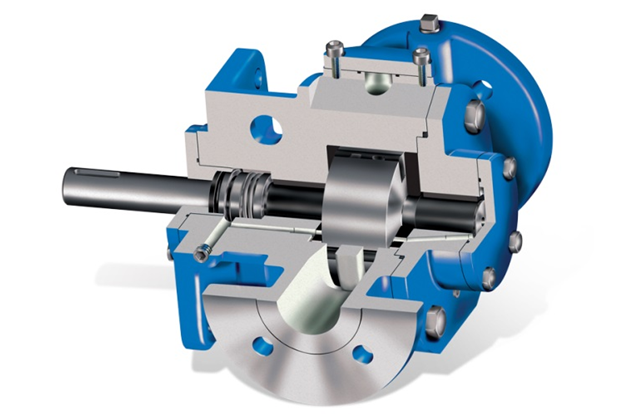The function of positive system pumps is to mechanically move the fixed volume of fluid through the system. One might think that the viscosity of fluid doesn’t affect the working of the gear pumps, but this is a misconception. Here in this article, we’ve mentioned the effects of viscosity on the positive displacement pumps.
- Drop in the external pressure: Drop in the pressure through tubes is the often-ignored feature in the hydraulic system. When the flow is streamlined then the drop in the pressure is directly dependent on the viscosity. The drop in the pressure affects both the outlet as well as an inlet of the positive displacement pump. The reciprocating pumps having pulsed flow are the ones that are much sensitive to the drop in the pressure and thus viscosity of the fluid.
- Drop in the internal pressure: The positive displacement pumps that are not designed for the fluids having high viscosity can have narrowed flow paths within the pump. And these compressed flow paths are capable of creating the same effects as the external pressure drops discussed in the above-given point. Therefore, it is always better to discuss the impact that viscosity can have on the pumps with the engineering team so that unintended consequences can be avoided.
- Internal leakage: Internal leakage is the other factor that affects the working of positive displacement pumps. Low viscosity fluids tend to flow between the thin gaps or micro-gaps within the internal seals but the chances of fluids with higher viscosity flowing through the internal gaps are very less. Hence, the higher viscosity makes the displacement less sensitive to the different pressures.
- The capacity of the pump: More force is required to quickly deform the fluids having higher viscosity compared to the force required to deform the low viscosity fluids. Therefore, the viscosity of the fluid plays a major role to determine the required amount of power to operate the positive displacement pumps. For instance, try to stir a bowl filled with water and a bowl filled with honey. The power required to stir the bowl having honey will be more as compared to the bowl having water. The reason behind this is that the viscosity of the honey is higher than the viscosity of the water. Thus, the same is true in the case of pumps. If the gears of the positive displacement pump have to rotate fluids having higher viscosity, then there will be more power loss, reduced speed, and low pump capacity.
- More chances of cavitation: If not taken care of then fluids having higher viscosity can lead to higher vacuums in the internal area of the pipes. Pressure lower than average at the positive displacement pump inlet can enhance the chance of cavitation inside the pump. Several studies have shown that fluids having higher viscosity don’t form as damaging as cavitation jet as fluids having a lower viscosity.
Bottom Line
The pump engineering team does not have control over the viscosity of the fluid. Therefore, one must know the effects of the viscosity of fluid on the system and positive displacement pump.


